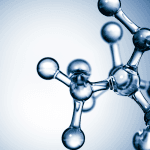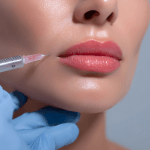The term ozempic face is a popular, non-clinical label for facial “deflation” seen during significant weight loss. Patients often describe a gaunt look, deeper folds, or new-onset wrinkles. In practice, the underlying issue is usually rapid loss of subcutaneous fat (fat beneath the skin), combined with baseline aging and skin quality.
For clinic teams, the operational challenge is consistent triage. You need to separate normal, expected body-composition change from red flags, misinformation, and unrealistic expectations shaped by social media. You also need a clear handoff pathway when patients ask about aesthetic correction.
Key Takeaways
- It is a colloquial term, not a diagnosis.
- Facial volume change can occur with any rapid weight loss.
- Document baseline facial status before major weight changes.
- Photo “before/after” comparisons are often unreliable.
- Set referral pathways for skincare and aesthetic options.
What Clinicians Mean by Facial Deflation
Patients rarely present saying “facial volume loss.” They present with phrases like “my face looks older,” “my cheeks collapsed,” or “I suddenly have lines.” The “ozempic face” conversation is often less about one medication and more about the visible trade-offs of weight reduction in the midface, temples, and perioral area. Many people have limited collagen and elastin reserve (skin-support proteins) to “snap back” after a fast change in adipose volume.
It helps to frame this as a spectrum. Mild cases may be perceived only in selfies or certain lighting. More noticeable changes can include hollowing under the eyes, flatter cheeks, and a sharper jawline with reduced soft tissue coverage. For some patients, the change is welcome. Others view it as premature aging.
Why it matters: A shared definition reduces conflict when patients request “fixes” immediately.
From a clinic access standpoint, many distributors restrict purchasing to licensed healthcare accounts. That matters when you are aligning medical and aesthetic services under one practice workflow.
For related background on GLP-1 care contexts, you can cross-reference your practice education with the Weight Loss Category and the Weight Loss Articles Hub.
Quick Definitions You Can Use With Patients
Use plain-language terms and document the clinical counterpart. “Facial deflation” can be charted as midface volume loss and reduced malar (cheek) projection. “Wrinkles” may reflect rhytids (skin lines) that become more visible after volume reduction. “Sagging” can reflect mild ptosis (droop) from less structural support. If you use “lipoatrophy (loss of fat tissue),” note that patients may confuse it with medication side effects, so specify that overall weight loss is a common driver.
Assessing Ozempic Face in Practice
Start by treating the request as a structured evaluation, not a cosmetic complaint. A consistent intake reduces variability between staff and protects patient rapport. Many practices find it useful to document baseline facial status before major weight-management changes, then reassess after weight stabilizes. Even when patients bring their own photos, you want a standardized set taken under controlled lighting and angles.
Ask what changed and when. Patients often tie the timing to a medication start or dose escalation, but the perceived change may align more closely with a period of rapid loss, illness, reduced sleep, dehydration, or major stress. Keep the discussion non-judgmental and focused on observable findings.
Signs to Document (Clinical and “Mirror” Language)
Use a short template that maps lay descriptions to exam terms. Document volume status in the temples, infraorbital area, midface, and perioral region. Note skin quality (texture, laxity, photoaging), not just folds. If the patient is comparing “before and after ozempic face” images, record what exactly they are seeing: deeper nasolabial folds, more pronounced marionette lines, or under-eye hollowing. Also note confounders like facial hair changes, tanning, and makeup differences.
| What the patient reports | Possible clinical correlate | Common confounders to rule out |
|---|---|---|
| “My cheeks disappeared” | Midface soft-tissue volume loss | Lighting angle, reduced edema, lower BMI baseline |
| “More wrinkles overnight” | Rhytids more visible with less volume | Dehydration, retinoid irritation, sun exposure |
| “My face is sagging” | Skin laxity with reduced support | Normal aging, rapid weight change, smoking history |
| “I look sick” | Hollowing or fatigue cues | Sleep debt, stress, illness, anemia evaluation as appropriate |
Mechanisms and Risk Factors to Consider
Clinically, the most useful framing is that facial changes track with body composition and time, not headlines. Patients may ask for the ozempic face cause as if it is a unique adverse effect. In most cases, the visible change is consistent with adipose reduction that would be expected from meaningful weight loss, regardless of method. The face is a high-salience area, so small changes feel large.
Risk factors tend to be cumulative. Lower baseline facial fat, older age, prior photoaging, smoking history, and a faster loss trajectory can all amplify the effect. Patients with less dermal thickness may show sharper transitions at the tear trough and nasolabial fold. Men can present differently; “ozempic face men” searches often reflect concerns about temple hollowing and under-eye prominence, sometimes accentuated by reduced beard fullness or different grooming patterns.
From a supply and compliance perspective, ask for paperwork supporting brand-name, authenticated inventory when stocking GLP-1 products. This is a straightforward safeguard for clinic procurement teams.
What Patients Often Miss About “Reversibility”
Patients frequently ask, “does ozempic face go away” or “is ozempic face temporary.” The honest answer is that it depends on what is driving the appearance. If the main driver is transient factors like dehydration, sleep loss, or acute illness, the look can improve with normalization. If the driver is true volume change plus baseline aging, improvement may be partial and may require time, skincare support, or aesthetic approaches. It is also reasonable to explain that weight stabilization sometimes changes the face again, but clinics should avoid promising a timeline or a guaranteed return to baseline.
Before-and-After Images and Social Media Claims
Many patient questions arrive pre-loaded with images: pictures of ozempic face on social platforms, curated “ozempic face before and after pictures,” and reposted celebrity content. Your role is not to debate internet narratives. It is to teach patients what makes an image comparison valid, and what makes it misleading.
Photography artifacts are common. Focal length, camera distance, and overhead lighting can exaggerate under-eye hollows and folds. Weight changes also shift posture and neck contour, which then changes facial angles. If patients bring “pictures of ozempic face wrinkles,” ask whether the “before” photo was filtered, taken after makeup, or shot in softer light. Small differences can create a dramatic story.
Why Celebrity Timelines Mislead
Searches such as “ozempic face celebrities,” “ozempic celebrities before and after 1 month,” and “ozempic face celebrities before and after 1 month” encourage a false sense of precision. Even when a photo pair is real, you rarely know the person’s baseline BMI, weight-change speed, sleep, stress load, lighting, makeup, or concurrent procedures. Some celebrity images reflect surgery, fillers, illness, or deliberate styling. Others are simply different lenses and angles. If a patient cites “ozempic face reddit” threads or “ozempic face reddit before and after,” acknowledge their concern, then redirect to your standardized photos and documented findings.
Quick tip: Use fixed camera distance and consistent lighting for clinic photos.
How to Reduce Risk During Weight-Management Care
When patients ask how to avoid ozempic face, it helps to translate the question into controllable processes. Clinics cannot “turn off” the visual effects of weight loss, but you can reduce surprises. The goal is expectation-setting, early documentation, and timely referrals when concerns arise. That approach also reduces the likelihood that patients chase unverified advice like “how to avoid ozempic face reddit” shortcuts.
Keep messaging consistent across roles. Front desk staff can explain that facial changes can happen with weight loss and that clinicians will document and review options. Nursing staff can reinforce hydration, sleep hygiene, and skin care basics without implying medical treatment. Prescribers can address the medication plan within the boundaries of the approved label and clinical judgment.
Clinic Counseling Checklist (Non-Prescriptive)
- Baseline photos: standardized angles and lighting
- Timeline framing: change may track loss speed
- Skin support: gentle routine, sun protection
- Nutrition flags: screen for inadequate protein intake
- Medication context: clarify labeled use versus off-label
- Referral triggers: distress, dysmorphia concerns, red flags
- Follow-up plan: document, reassess after stabilization
For internal education, many teams keep a short reading list for staff. Consider linking clinicians to Ozempic For Weight Loss, Wegovy And GLP-1 Therapy, and Weight Loss Injections Overview so counseling language stays aligned.
Treatment Pathways and Referral Options
Patients often jump straight to “treatment for ozempic face,” including requests for “how to fix ozempic face naturally.” Keep your clinic’s approach stepped and scope-appropriate. Start with reassurance and objective documentation. Then discuss supportive measures (skin barrier care, photoprotection, and addressing reversible contributors like dehydration). When concerns persist, offer referral pathways rather than improvised in-house solutions that are outside your team’s credentialing.
Aesthetic options vary by anatomy, risk tolerance, and local regulations. Common categories include dermal fillers for volume restoration, biostimulatory products that support collagen over time, energy-based devices for texture, and procedural lifts or threads in selected cases. A useful internal primer is Hyaluronic Acid In Aesthetic Medicine and the myth-setting guide Dermal Filler Myths. If your practice provides cheek augmentation, align consult documentation with resources like Juvéderm Voluma For Cheeks.
Product selection is not the point of this guide, but teams sometimes ask what is commonly stocked for supportive skin care. If your clinic carries adjuncts, keep claims conservative and link staff to the item’s intended use and IFU. For example, some practices keep a non-prescription support shelf that may include items like Jalupro Moisturizing Face Masks alongside standard cleansers and sunscreen guidance.
Clinic Workflow Snapshot: From Intake to Inventory
If patients connect facial changes to GLP-1 therapy, your workflow should connect the clinical visit to your procurement controls. This reduces confusion when patients ask about brand switching, shortages, or authenticity. It also helps when multiple service lines (weight management and aesthetics) share staff and storage space. When ozempic face concerns arise, the operational answer should be “we can document and refer,” not “we guess.”
- Verify: confirm clinician scope and patient pathway
- Document: baseline photos, consent, and counseling notes
- Source: use reputable channels and confirm product pedigree
- Receive: log lot/expiry; inspect packaging integrity
- Store: follow labeled storage and temperature requirements
- Dispense/admin: record per your clinic policy and regulations
- Follow-up: reassess concerns and route referrals
Inventory is generally sourced through screened distribution channels. Keep that expectation visible in your SOPs, especially when staff are asked to “match” what patients see online. If your practice depends on reliable US logistics, document who can accept deliveries and where products are stored on arrival.
When teams compare GLP-1 options operationally, it helps to separate clinical decision-making from supply planning. For category context, see Mounjaro Weight Loss Insights and Saxenda Key Considerations. For internal catalog references (not patient-facing), practices may keep links like Ozempic Listing and Wegovy FlexTouch Listing in a staff-only resource folder.
Authoritative Sources
When patients attribute facial changes to a specific drug, anchor your counseling in primary sources. Use the official label to confirm approved indications, safety language, and storage requirements. Then use specialty society materials for general education on cosmetic procedures, risks, and expectations.
- FDA labeling database for approved prescribing information
- FDA Drugs@FDA database for product details
- American Academy of Dermatology resources on skin and procedures
Use these sources to keep team language conservative. Avoid implying that a facial appearance change is a distinct labeled adverse reaction unless the label explicitly states it.
Recap for Clinic Teams
Most “ozempic face” concerns reflect common facial volume shifts seen with meaningful weight loss. Your best tools are standardized photos, consistent documentation, and careful expectation-setting. Treat social media comparisons as prompts for education, not evidence. When patients want aesthetic correction, route them through a defined consult pathway that matches clinician scope and local regulations.
This content is for informational purposes only and is not a substitute for professional medical advice.






